This article was medically reviewed by Victor Catania, MD. Dr. Catania is a board certified Family Medicine Physician in Pennsylvania. He received his MD from the Medical University of the Americas in 2012 and completed his residency in Family Medicine at the Robert Packer Hospital. He is a member of the American Board of Family Medicine.
There are 7 references cited in this article, which can be found at the bottom of the page.
wikiHow marks an article as reader-approved once it receives enough positive feedback. In this case, 80% of readers who voted found the article helpful, earning it our reader-approved status.
This article has been viewed 327,233 times.
Rapid Eye Movement (REM) is a stage of sleep where your brain is very active and prone to dreaming. During REM sleep, your eyes actually make rapid movements. The amount of REM sleep you get may depend upon age and other factors, with infants spending 50 percent of time in REM and adults spending closer to 20 percent. Increased REM sleep has been shown to improve your memory recall and your overall mental abilities. You may also experience vivid dreams when you are in REM stage of your sleep cycle and may want to prolong your dreams at night.
Steps
Adjusting Your Sleep Habits
-
1Understand the stages of sleep. There are four stages of sleep, with the fourth and final stage being REM sleep. In order to get more REM sleep, you need to gradually allow your mind and body to go through the first three stages of sleep. Maintaining a regular sleep schedule and healthy sleep habits will help you do this.[1]
- Stage N1: This is when you are transitioning into sleep and lasts about five minutes. Your eyes will move slower under your eyelids, and your muscle activity will slow down but you can be easily awakened by a noise or a sound.
- Stage N2: This is the first stage of true sleep and lasts 10–25 minutes. Your eye movement will stop completely, your heart rate will slow and your body temperature will decrease.
- Stage N3: This is the beginning of deep sleep, during which you are hard to wake up and if you are woken up, you will often feel groggy or disoriented for a few minutes. In this stage, your brain waves are very slow and blood flow is directed away from your brain to your muscles, which restores physical energy in your body.
- Stage N4: The final stage of sleep is REM sleep, or dream sleeping. This occurs about 70 to 90 minutes after falling asleep. You will likely experience rapid eye movement, shallow breathing, and your heart rate and blood pressure may increase. During this stage, your arms and legs are also paralyzed.
- Keep in mind that during the night, your sleep follows a pattern, moving back and forth between deep sleep and REM sleep. Each cycle lasts about 90 minutes and repeats four to six times during the night. As the night progresses, the amount of time you spend in each stage changes. Most deep sleep occurs in the first half of the night. Later in the night your REM sleep stages become longer.
-
2Maintain a regular sleep schedule. Create a sleep schedule where you wake up and go to sleep at the same time everyday, even on weekends or days off. Sleep requirements vary from person to person, but on average, you should be getting between seven and nine hours of sleep. Having a regular sleep schedule will allow you to experience REM sleep more often, as you will cycle between the stages of sleep several times throughout the night during a full seven to nine hour sleep[2]
- Some people think getting just one less hour of sleep won’t affect their daily functioning or that they can make up for lack of sleep on the weekend or a day off, but unfortunately it doesn't work that way. Any changes or shifts in your regular sleep schedule will only have a negative effect on your sleeping habits and could lead to less deep sleep or REM sleep.[3]
- It’s a myth that your body adjusts quickly to different sleep schedules. While most people can reset their biological clock, this can only be done by timed cues, and even then, only by one to two hours per day at best. Keep in mind it can take more than a week for your body’s internal clock to adjust to traveling across several time zones or to switching to the night shift.
Advertisement -
3Turn off all electronics and distractions a few hours before bed. Shut off your television, smartphone, tablet, and computer or, even better, keep all electronics out of your bedroom completely. The type of light these screens emit can stimulate your brain, suppress the production of melatonin (which encourages REM sleep), and interfere with your body’s internal clock.[4]
- Another option is to shut down your computer on a schedule. This will automatically sleep your machine and prevent you from working on your computer too late or too close to your bedtime. There are sleep features on both PCs and Macs that you can activate. As well, if you want your computer to be ready to go in the morning, once you wake up, you can schedule a startup time too.
-
4Keep your bedroom dark, cool, and quiet. Use heavy curtains or shades to block the light from windows. Cover any electronic displays, like tvs or computers so the light does not glow in the room. You can also use a sleep mask to cover your eyes and create a dark space that will help you sleep.[5]
- If you have difficulty sleeping due to loud noises outside your window or a loud sleep partner, consider investing in good earplugs, or a noise machine.
-
5Don’t consume caffeine or alcohol four to six hours before your bedtime. About half the caffeine you consume at 7 pm is still in your body at 11 pm. Caffeine is a known stimulant that can suppress your REM sleep and can be found in coffee, chocolate, soft drinks, non-herbal teas, diet drugs, and some pain relievers. Limit how many cups of coffee you have several hours before bed, or try to eliminate caffeine from your diet all together.[6]
- Alcohol also prevents deep sleep and REM sleep. It will keep you in the lighter stages of sleep, causing you to possibly wake up easily and have a harder time falling back asleep. Avoid consuming alcohol several hours before bed to improve your chances of having REM sleep.
-
6Try to go to bed sleep 30 minutes earlier than usual. Your REM sleep stages are longer in the morning, so try to prolong your REM sleep by adding an extra 30 minutes of sleep. Adjust your bedtime so you go to sleep 30 minutes earlier than usual and then maintain this adjustment in your sleep schedule by doing this every night.[7]
- Always be consistent with adjustments to your sleep schedule, as you will need to get enough of each stage of sleep, especially deep sleep, to improve your REM sleep. If you do not get enough deep sleep at night, your body may try to make up for it the next night, thereby reducing the amount of REM sleep you experience.
Using Medication and Exercise
-
1Ask your doctor about melatonin for improved REM sleep. Recent studies have shown that taking melatonin supplements, about 3 mg a day, can increase your REM sleep and help you stay in the REM stage of your sleep cycling for a longer period of time. Your doctor can recommend a melatonin supplement, usually in pill form, as well as the prescribed dosage for your body type.[8]
- Melatonin is also recommended for the elderly and people who work late shifts at night, as it can help to normalize your sleep cycle and be beneficial for your health overall.
-
2Be wary of over-the-counter medications that can lead to suppressed REM sleep. Many of the side effects of these drugs can have adverse effects on your sleep patterns and daytime alertness. Common medications that can disturb your REM sleep include:[9]
- Nasal decongestants.
- Aspirin and other headache medications.
- Pain relievers that contain caffeine.
- Cold and allergy medications containing an antihistamine.
- Certain diet pills and antidepressants.
- If you are taking any of these medications, try to reduce your dosage. Or research alternative methods to treat these issues so you can stop taking these over-the-counter medications.
-
3Commit to exercising at least 20 to 30 minutes a day. Daily exercise is proven to help people sleep and can help you stay in the REM stage of sleep longer. But a workout too close to bedtime might interfere with your sleep schedule. Try to get daily exercise about five to six hours before bedtime.[10]
References
- ↑ http://www.helpguide.org/articles/sleep/how-much-sleep-do-you-need.htm
- ↑ http://www.nhlbi.nih.gov/files/docs/public/sleep/healthy_sleep.pdf
- ↑ http://www.helpguide.org/articles/sleep/how-much-sleep-do-you-need.htm
- ↑ https://www.healthnavigator.org.nz/healthy-living/s/sleep-tips/
- ↑ https://www.betterhealth.vic.gov.au/health/conditionsandtreatments/sleep-hygiene
- ↑ https://www.cci.health.wa.gov.au/~/media/CCI/Mental-Health-Professionals/Sleep/Sleep---Information-Sheets/Sleep-Information-Sheet---04---Sleep-Hygiene.pdf
- ↑ http://www.helpguide.org/articles/sleep/how-much-sleep-do-you-need.htm
- ↑ http://www.ncbi.nlm.nih.gov/pubmed/14715839
- ↑ Ask your doctor about melatonin for improved REM sleep.
About This Article
To get more REM sleep, stick to a consistent sleep schedule to ensure you are getting enough sleep each night. In addition, try to turn off all of your electronics a few hours before bed so the blue light doesn't keep you up late. If you still don't feel rested, you should try to get 30 minutes of exercise 5 to 6 hours before bed. Finally, for the best sleep possible, keep your bedroom dark, cool, and quiet as well by using window shades and earplugs if necessary. For tips from our Medical reviewer on how to use medication to get more REM sleep, read on!
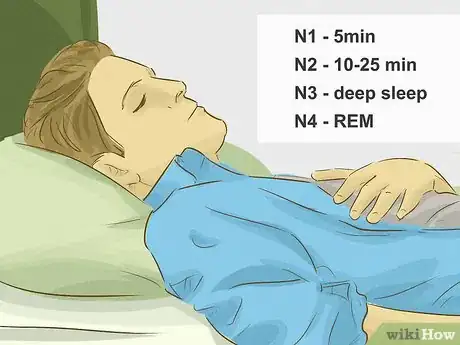
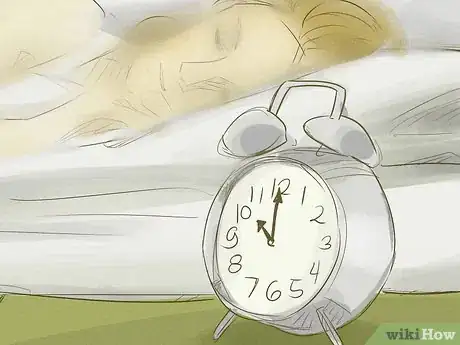


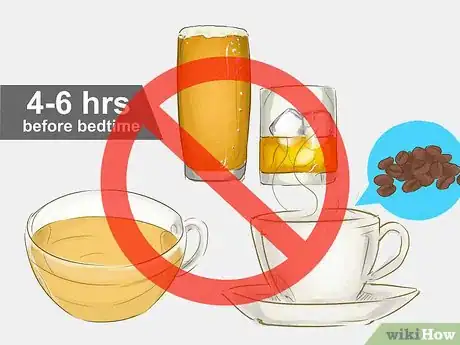
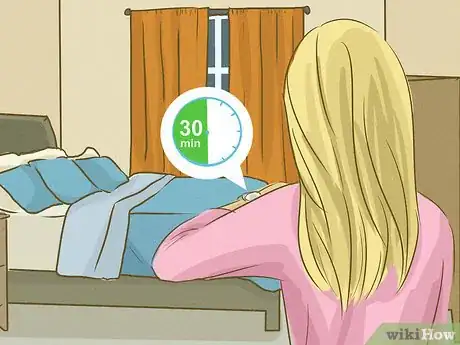




























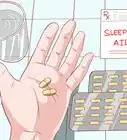






































Medical Disclaimer
The content of this article is not intended to be a substitute for professional medical advice, examination, diagnosis, or treatment. You should always contact your doctor or other qualified healthcare professional before starting, changing, or stopping any kind of health treatment.
Read More...